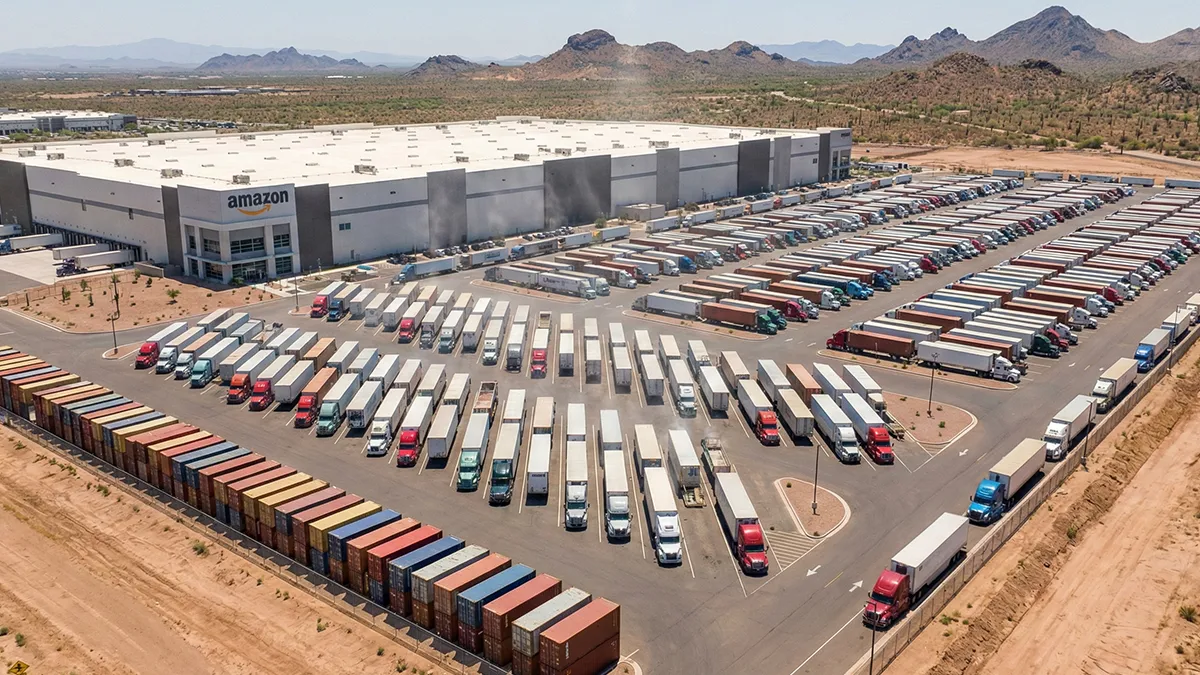UPS to Halve Amazon Deliveries by 2026 in Profit Push
In a significant strategic shift, UPS has announced plans to reduce its Amazon delivery volume by more than 50% by the second half of 2026. This move is part of a calculated effort to steer the company towards higher profitability and a more diversified customer base.
During the company's Q4 earnings call, UPS CEO Carol Tomé acknowledged that while Amazon remains one of its largest clients, its contribution to UPS’s domestic profitability is disproportionately small. By reducing its dependency on lower-margin Amazon deliveries, UPS aims to significantly improve its overall financial health.
This decision accelerates UPS’s pivot towards more lucrative sectors, such as specialized medical logistics and the rapidly growing small to medium-sized business (SMB) market. Amazon, which has been steadily building its own in-house delivery network, acknowledged the decision and confirmed it will continue to work with a diverse mix of carriers, including UPS, to meet its delivery demands.
The Financial Impact
According to UPS's financial reports, the move is expected to reshape its revenue structure. While the e-commerce giant currently accounts for a significant portion of deliveries, the numbers reveal a clear strategy:
-
Current Revenue: In the last fiscal year, revenue from Amazon accounted for 11.8% of UPS's total.
-
Projected Volume Drop: By 2025, UPS anticipates its daily U.S. package volume will decrease by approximately 8.5% year-over-year.
-
Projected Revenue Growth: Crucially, revenue per package is projected to grow by 6%, offsetting the lower volume with higher-margin business.
UPS emphasized that the partnership is evolving, not ending. The company will continue to play a vital role in Amazon's network, particularly with customer returns processed through its nationwide UPS Store locations. "[Some Amazon deliveries] will not go to zero," Tomé noted, confirming that UPS is making the necessary adjustments to ensure long-term, sustainable growth.
The Broader Impact: What This Means for the Industry
This strategic pivot by UPS sends ripples throughout the logistics and e-commerce landscape:
-
For SMBs and Other Shippers: This is a clear opportunity. As UPS actively courts new business, SMBs and healthcare clients may find more competitive rates and enhanced service offerings available to them.
-
For Competitors: This move could open the door for competitors like FedEx and regional carriers to absorb a larger share of e-commerce volume.
-
For the Logistics Market: It highlights a major industry trend: diversification. Carriers are increasingly wary of becoming overly reliant on a single, powerful client and are actively working to balance their portfolios.
Frequently Asked Questions
1. Why is UPS reducing deliveries for a major client like Amazon?
The primary reason is profitability. While the volume of Amazon packages is high, the profit margin on these deliveries is very low for UPS. By reducing this volume, UPS can free up capacity in its network for more profitable deliveries from other sectors, such as healthcare and small to medium-sized businesses (SMBs).
2. Will my Amazon packages be delayed because of this change?
It's unlikely that consumers will see significant delays. Amazon has spent years building its own logistics network (Amazon Logistics) and also uses a wide variety of other carriers, including the USPS and regional couriers. This diverse network is designed to handle fluctuations in volume from any single partner.
3. Is UPS stopping all Amazon deliveries completely?
No. The plan is to reduce the volume by more than 50%, not eliminate it entirely. UPS will continue to handle certain Amazon deliveries and will remain a key partner for processing customer returns through its network of UPS Store locations.
4. What does this decision mean for small businesses?
This is a positive development for SMBs. With UPS actively looking to fill its network capacity with higher-margin business, small and medium-sized companies may find UPS more eager to offer them competitive shipping rates and better service terms as it seeks to diversify its client base.
5. Is this part of a larger trend in the shipping industry?
Yes. This move is a prominent example of a broader trend where major logistics carriers are actively trying to diversify their revenue streams. Relying too heavily on a single mega-client creates financial risk, so companies like UPS are balancing their portfolios to ensure more stable, long-term profitability.
Key Takeaways
UPS’s decision to cut its Amazon delivery volume by over 50% marks a defining moment in its strategy. By consciously trading high volume for high value, the company is focusing on profitability and customer diversification. This calculated adjustment positions UPS to foster long-term financial health and resilience in an intensely competitive logistics market, demonstrating a clear vision for a future that is less dependent on any single client.


